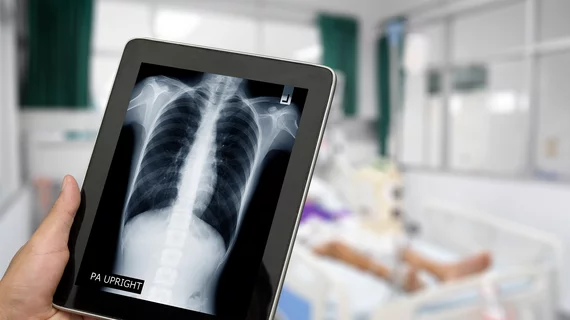A post-hoc analysis of the Danish Lung Cancer Screening Trial (DLCST) has estimated an overdiagnosis rate of more than 67 percent in patients who opt for low-dose CT lung screening, researchers reported in JAMA Internal Medicine this month.
The DLCST, which launched in 2004, follows a study model similar to that of the United States’ National Lung Screening Trial, corresponding author and NOVA Medical School physician Bruno Heleno, MD, PhD, and colleagues wrote—but the authors of that project estimated overdiagnosis at just 18.5 percent. The Italian Lung Cancer Screening Trial, on the other hand, found no evidence at all of overdiagnosis.
Mark H. Ebell, MD, MS, of the University of Georgia, and co-author Kenneth W. Lin, MD, MPH, said in a related JAMA editorial overdiagnosis is “an often underappreciated harm of screening.” But with the development of more sensitive screening tests, increasing biopsy rates and lower thresholds for reporting abnormalities, physicians are more likely to overdiagnose.
“The rate of overdiagnosis in a low-dose computed tomography screening study depends on the age and health status of the population, the distribution of cancer types, the screening protocol and whether low-dose CT is compared with no screening or with chest radiography,” Ebell and Lin wrote. “An imbalance in the baseline risk of lung cancer between screened and unscreened groups can lead to error in either direction.”
Heleno and his co-authors calculated their overdiagnosis rate by pulling data from 4,104 current and former smokers in Denmark. The patients had been randomized to five annual low-dose CT screenings for cancer or no screening at all, and researchers calculated the absolute difference in the cumulative incidence of cancer in both groups five years after screening was complete.
From the study’s baseline to final follow-up, Heleno et al. said 20.3 percent of participants in the control group had at least one off-protocol chest CT. In the screened group, 16.5 percent of patients underwent at least one chest CT during follow-up.
Ninety-six participants in the screened group had been diagnosed with lung cancer by the end of the trial, the authors said, compared to 53 in the control group. The absolute risk of lung cancer with low-dose CT increased by 2.1 percent, and overdiagnosis was estimated at 67.2 percent.
Ebell and Lin said the researchers’ estimate might have been higher than other studies’ because the screened cohort in the Danish study had a higher baseline risk of lung cancer than the control group. Participants also underwent five rounds of screening in the DLCST, compared to three in the National Lung Screening Trial, and the NLST compared results of low-dose CT with those of chest radiography, while the Danish trial compared CT to no screening at all.
In the future, Ebell and Lin said it’ll be important for scientists to continue this kind of research so we can get a better gist of true rates of overdiagnosis in low-dose CT cancer screening.
“The [United States Preventive Services Task Force] recommends that healthcare professionals practice shared decision-making with selected high-risk patients eligible for annual low-dose CT screening,” they wrote. “Patients can make informed choices about low-dose CT only if practitioners fully disclose all the potential harms of screening, including the risk of overdiagnosis.”

